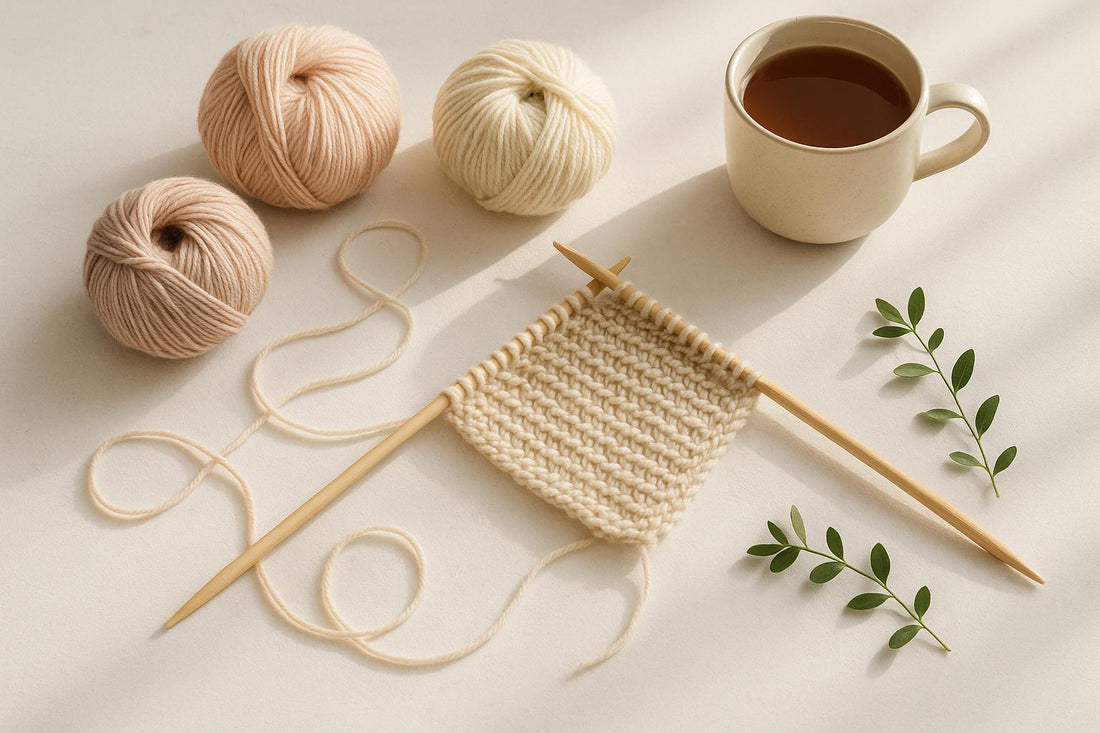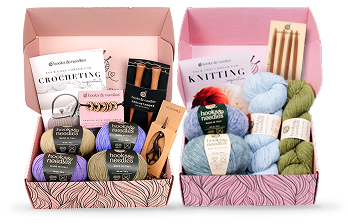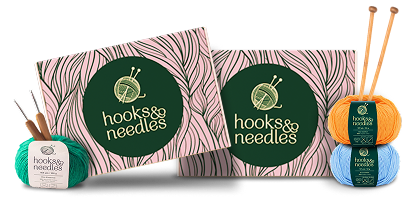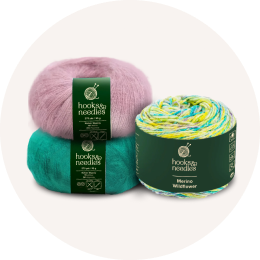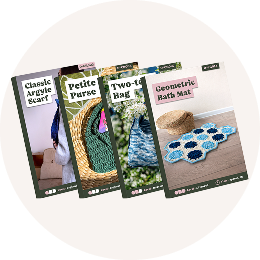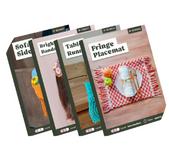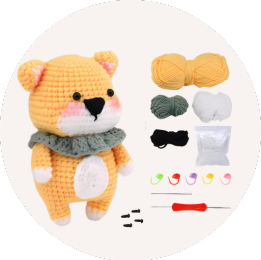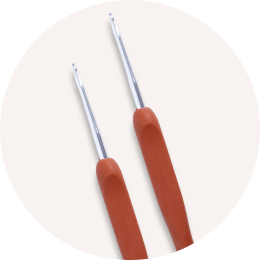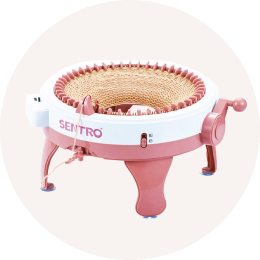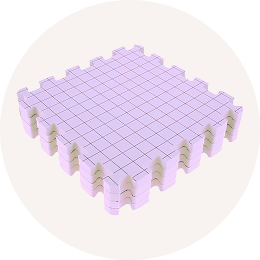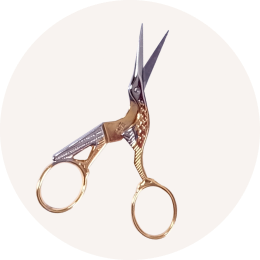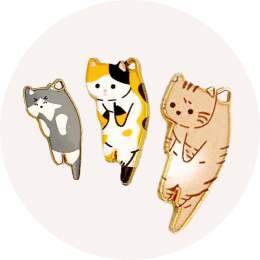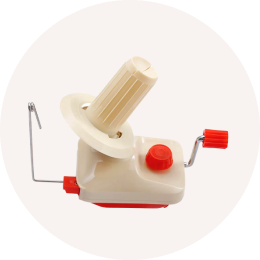When you're feeling stuck on a knitting or crochet project, it's often due to one of three reasons: technical challenges, boredom with the design, or low energy. The good news? There are practical ways to get back on track:
- Identify the Problem: Is it a tricky stitch, repetitive design, or just feeling drained?
- Try Something New: Add textured stitches, test small samples, or experiment with bold color changes.
- Repurpose Stalled Projects: Unravel unused pieces or combine leftover yarn to create something new.
- Organize Ideas: Keep an idea notebook or connect with other crafters for fresh inspiration.
The key is to approach your slump with small, manageable changes and see it as an opportunity to refresh your skills or try new techniques. Whether you tweak your current project or start something smaller, the goal is to rediscover the joy of crafting.
how I keep myself motivated to work on knitting projects (8 simple tips!)
Identify Why You Feel Stuck
Feeling stuck with your knitting or crochet project? The key to moving forward is figuring out what's holding you back. Most blocks fall into one of three categories, and identifying your specific issue can help you find the right way to overcome it.
Technical Problems
Struggling with a tricky stitch? Or maybe your pattern isn't making sense, and you're not sure where things went wrong. These kinds of challenges often boil down to gaps in your foundational skills. For example, if you're unclear about stitch anatomy - like how to differentiate between back and front loops, posts, or yarn overs - it can lead to frustration. Advanced techniques like cables, Fair Isle colorwork, or intricate lace patterns can feel overwhelming, especially when instructions are unclear. As crochet expert Dora Does wisely reminds us:
"No matter how much crochet experience you have, you will make mistakes because you are a human".
Taking the time to deepen your understanding of stitch anatomy can make a world of difference. Not only does it strengthen your overall skills, but it also helps you catch mistakes early before they throw off your entire project.
Design Boredom
Sometimes, the problem isn't skill-related - it’s that your project has become, well, boring. Maybe you're halfway through a sweater or stuck in endless rounds of single crochet, and the repetition is draining your enthusiasm. Working with the same design or color palette for too long can make the process feel tedious. Pay attention to when your interest starts to wane. It might be a sign to tweak your current project or experiment with fresh designs and colors in the future.
Low Energy
Even if you love your project and aren't facing technical hurdles, you might still find yourself unable to pick it up. Life happens - whether it's a busy schedule, stress, or just feeling mentally drained, low energy can lead to procrastination. Instead of forcing yourself to tackle a complex piece, consider starting a smaller, simpler project. Breaking your work into shorter, manageable sessions can also help you ease back into the groove without adding pressure.
Identifying the root of your block is the first step in finding the right solution, setting you up for success with the steps ahead.
Try New Techniques and Stitches
Feeling stuck with your project? Trying out new techniques can breathe life into your work without undoing your progress. Learning a fresh stitch or method isn’t about starting over - it’s about adding creative touches that can inspire and elevate your craft.
Fiber arts are wonderfully adaptable. You can seamlessly integrate new skills into your current piece by adding borders, accents, or decorative elements. This way, you keep your project intact while exploring new ideas.
Add Textured Stitches
Adding texture can completely transform the look and feel of your project. Take the moss stitch, for example. Its alternating knit-and-purl design creates a subtle, bumpy texture that works beautifully for borders, cuffs, or even panels in larger pieces.
Want to get even more creative? Try using duplicate stitches to overlay colorful designs onto finished fabric. Andrea Rangel’s 2025 book is a great resource, offering over 150 motifs along with clear, step-by-step guidance.
Test on Small Samples
Experimenting on a small scale is a smart way to build confidence with new techniques. It’s easier to practice on smaller items, and you won’t feel like you’re risking your larger project. Dishcloths and washcloths are perfect for this - they’re functional, require minimal yarn, and let you see how different stitches work in practice.
Coasters are another great option for testing textured stitches or experimenting with bold color combinations. Each one can serve as a mini showcase of your growing skills.
For more intricate techniques, try working on small decorative elements like appliques. Practice creating heart or flower motifs on a smaller scale, and once you’ve mastered them, you’ll feel ready to incorporate them into larger projects.
Granny squares are a classic choice for experimenting. You can test new stitch patterns or color changes on a single square, then combine several into a larger piece like a blanket - or use them as standalone decorative accents.
Finally, look for projects labeled as beginner-friendly. These are designed to make learning enjoyable and stress-free. Plus, using leftover yarn for these experiments keeps things economical and reduces waste.
Change Your Colors
Trying out new color schemes can breathe fresh life into your projects. A new palette has the power to turn even repetitive patterns into something visually striking and engaging.
Your yarn stash is a treasure trove of possibilities. Dig through it to find leftover skeins that could revive stalled projects, and try sorting your collection by color to inspire unexpected combinations. Adjusting your color strategy might be just the spark your project needs.
Add New Colors
Color blocking is a fantastic way to make a bold statement. By dividing your project into distinct sections of contrasting or complementary hues, you can create modern, geometric designs. This technique shines in projects like blankets, scarves, or sweaters, where panels or sections can really stand out.
Stripes are another simple yet effective way to add variety. Experiment with different stripe widths - thin, bold, or a mix of both - to break up stretches of single-color work and add a sense of rhythm to your design.
For a more gradual effect, consider an ombre approach. This technique transitions smoothly from one color to the next, creating a flowing, gradient look that works beautifully for shawls and blankets.
If you're looking for a structured way to incorporate color changes, try a temperature blanket. These projects use daily temperature data to guide color choices. For instance, in 2024, the NOAA Library introduced a "Temperature Blanket Stitch-a-Long" program, where participants selected yarn and color palettes to represent daily temperatures. This method not only adds meaning to your project but also makes long-term work feel more organized and rewarding.
Even small additions can make a big difference. Adding colorful appliqués - like flowers, hearts, or geometric shapes - can break up large areas of solid color. This lets you experiment with new color combinations without committing to major changes in your main design.
sbb-itb-f7119e8
Build Your Idea Collection
Having a collection of ideas at your fingertips can be a lifesaver when your creativity hits a wall. The trick is to gather and organize these ideas in a way that makes them easy to access whenever you need a spark. This approach works hand in hand with other methods to keep your enthusiasm alive and your project moving forward.
Think of your idea collection as a toolbox for tackling creative blocks. Instead of feeling stuck, you'll have a ready stash of techniques, color palettes, and design concepts to reignite your imagination. Just like trying out new stitches or experimenting with fresh color combinations, building an idea collection keeps your creativity flowing.
Keep an Idea Notebook
An idea notebook is a great way to centralize your inspiration. Whether you prefer a digital format or an old-school paper notebook, it can serve as your go-to space for jotting down ideas, sketching patterns, or saving color schemes that catch your eye. Digital tools make it easy to search and organize, but many crafters love the tactile experience of a physical notebook - perfect for quick sketches or noting down a burst of inspiration you spot during the day.
Connect with Other Crafters
Engaging with other crafters is a fantastic way to expand your creative horizons. Joining online communities, forums, or watching video tutorials can introduce you to new techniques, provide practical tips, and offer fresh perspectives on your projects. Pairing the insights you gain from others with your personal idea notebook can create a rich pool of inspiration.
Structured community projects, like themed stitch-a-longs, are another excellent way to collaborate and share ideas. These projects often encourage experimentation and provide a sense of camaraderie. Meanwhile, curated video tutorials can help you tackle tricky stitches or master complex color transitions with clear, step-by-step guidance. Watching skilled crafters in action can boost your confidence and inspire you to try something new.
Turn Stalled Projects Into Something New
When your usual crafting methods hit a roadblock, it might be time to rethink your approach. Repurposing unfinished projects can lead to unexpected and exciting outcomes. For example, that half-completed sweater could transform into a chic hat, or a collection of abandoned granny squares might come together as a vibrant sampler blanket. This isn't just about salvaging materials - it's about unlocking new design opportunities.
The secret lies in shifting your perspective. Instead of focusing on "fixing" a stalled project, think of it as a chance to explore fresh ideas. If boredom or frustration has taken the joy out of your current project, switching gears can reignite your enthusiasm. Smaller, quicker projects made from reclaimed materials can also deliver the sense of accomplishment you need to get back into your creative groove. Let’s dive into how reimagining your materials can breathe new life into your crafting.
Unravel and Reuse Your Yarn
Unraveling - or "frogging", as crafters call it - can be a surprisingly liberating process. If you're feeling burned out on a large or complex project, starting over with the same materials can provide a fresh start and a renewed sense of purpose.
The process is simple but requires a bit of care. Gently remove stitches and wind the yarn to avoid tangles. If the yarn has become kinked, you can restore its texture by lightly steaming or dampening it, then letting it dry under slight tension. This step helps bring the yarn back to life, making it easier to work with.
For instance, that bulky yarn from an abandoned cardigan could easily become a cozy hat you can whip up in just one evening.
Combine and Repurpose Projects
Once you've reclaimed your yarn, the possibilities multiply. Unfinished pieces and leftover yarn can be combined in ways that spark entirely new projects. Those neglected skeins and partial balls might even lead to designs more interesting than your original plans.
One idea is to create "magic balls" by joining scraps of yarn with similar weights. The blend of colors often produces unexpected and beautiful patterns. You can also combine yarns of different weights by doubling or tripling thinner strands to match the thickness of bulkier ones.
A great example of this creative reuse comes from designer Laerke Bagger, who, in 2020, crafted the "Alone Together sweater." She achieved this by knotting together scraps of various weights into a single large ball, using it to knit the entire sweater. This technique shows how even mismatched materials can come together in harmony.
Granny squares or other partial pieces from unfinished projects can also find new life. Combine them into sampler afghans or wall hangings. Squares intended for one blanket might pair beautifully with new ones in different patterns or colors, creating a dynamic and unique finished piece.
Leftover yarns are also perfect for accent details. Use them as contrasting elements in new projects, like borders, ribbing, or even colorwork. Larger leftovers can serve as the main color for smaller items like hats or mittens, while smaller scraps are ideal for details like heels and toes. Even yarns you’re not particularly fond of can add texture and interest when used sparingly in a larger design.
To make the most of your materials, try sorting them by length, weight, or color family. This makes it easier to visualize combinations you might not have considered before. You may be surprised to find that yarns from completely different projects work beautifully together when paired in new ways.
Conclusion: Get Back to Enjoying Your Craft
Hitting a roadblock in your knitting or crochet project doesn’t mean your creativity has vanished - it’s just a nudge to try something different. When technical challenges arise, taking a step back to pinpoint the issue often leads to straightforward fixes. Feeling uninspired by a design? Experimenting with new stitches, textures, or patterns can reignite your excitement. And if your energy feels low, consider lighter projects or switching up yarn weights to make things more manageable.
One of the best things about fiber arts is how adaptable they are. Adding textured stitches, trying out small samples of new techniques, or playing with fresh color palettes can completely transform how you feel about a project. Even swapping yarn types can breathe new life into a familiar pattern, making it feel like a whole new creation.
With these strategies in hand, you’re ready to tackle creative blocks head-on. Building a collection of ideas and inspiration ensures you’ll always have something to spark your imagination when motivation dips. And remember, a stalled project isn’t a failure - it’s simply untapped potential waiting to be reimagined into something even better.
Every challenge is an opportunity to learn more about your personal style and grow your skills. Instead of seeing these moments as setbacks, embrace them as essential parts of the creative journey. Who knows? Your next favorite technique, color combination, or project idea could be just on the other side of that stuck feeling.
The goal isn’t to avoid creative blocks but to turn them into stepping stones. Your craft should be a source of joy, and these approaches help ensure it stays that way. Rediscover the satisfaction and creativity that first drew you to fiber arts, and let it continue to inspire you.
FAQs
How can I stay motivated when I feel stuck on my knitting or crochet project?
Feeling stuck on a knitting or crochet project? Don’t worry, it happens to everyone. A great way to shake things up is to try out new stitches - they can add variety and give you a fun challenge. Or, if you’re looking for a quick win, tackle a small, simple project to get those creative juices flowing again. You might also find inspiration by browsing crafting books, blogs, or joining online communities where fellow crafters share their ideas and creations.
Another trick is to use tools like mood boards or color swatches to imagine fresh possibilities for your work. Even something as simple as reorganizing your yarn stash or experimenting with a different color palette can reignite your excitement. And don’t underestimate the power of a short break - sometimes stepping away for a bit is all it takes to come back with a fresh perspective and renewed energy!
What’s the best way to organize and save ideas to stay inspired for crafting projects?
To keep your creative juices alive, set up a system to capture and organize your ideas. Whether it’s a trusty notebook or a digital app, make it a habit to jot down your project ideas, sketch designs, or note down stitch patterns. Another great way to stay inspired is by creating a mood board. Fill it with photos, fabric swatches, or color palettes that ignite your imagination. If you’re into fiber arts, try keeping a collection of color samples or experimenting with fresh combinations to see what sparks.
Having a dedicated space for your ideas means you’ll always have a go-to source of inspiration when you need it most!
How can I safely reuse yarn from an unfinished knitting or crocheting project?
To give new life to yarn from an unfinished project without damaging it, start by gently unraveling the piece and winding the yarn into a ball or skein. Next, soak the yarn in cool or lukewarm water with a small amount of mild soap for about an hour. This helps relax the fibers and smooth out any kinks. After soaking, carefully press out the excess water - don’t wring it - and wrap the yarn in a clean towel to absorb remaining moisture. Hang it up to air dry completely, making sure it isn’t stretched out. Once the yarn is dry, rewind it into a ball or skein, and it’s ready for your next creation!
